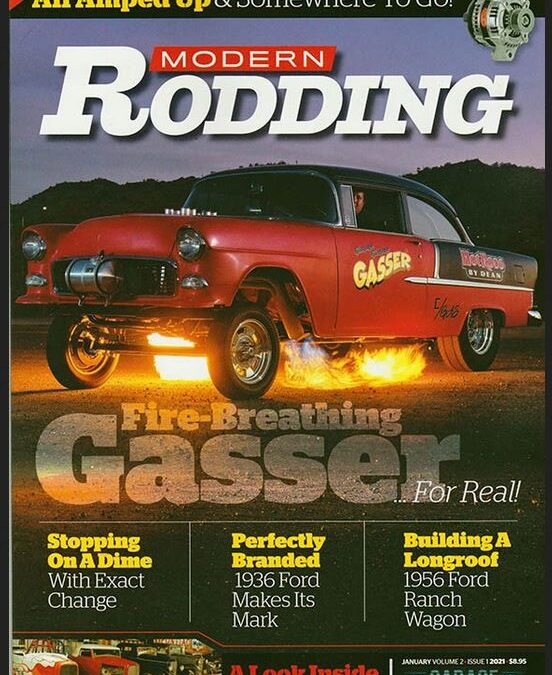


1970/1971 Eighty Four Hours of Endurance : Daytona/Sebring/Watkins Glen
In 1969, two of the most famous sports car manufacturers in the world, one German and one Italian, built what even today are considered the epitome of what a race car should be. The ensuing fight between the Porsche 917 and the Ferrari 512 S, driven to the limit by some of the sport’s greatest stars, has forever been regarded as a special two years in sports car racing, captivating a global audience and providing the storyline for Le Mans, an epic Hollywood film. The legendary Porsche vs. Ferrari duel started at the Daytona International Speedway in January 1970, and although the battle lasted less than two years, ending at Watkins Glen in the summer of 1971, it left a trail of memories in its smoky wake. EIGHTY FOUR HOURS OF ENDURANCE captures many of those memories in a richly illustrated book that bundles together the six American rounds of the FIA World Championship for Makes in 1970 and 1971. Daytona, Sebring and Watkins Glen. 24, 12 and 6 hours in length. Times two. Featuring 520 photographs, 230 black & white and 290 color, and supplemented by detailed race reports, results and maps, you’re taken onto the high banks at Daytona, down the concrete runways of Sebring and around the short, fast Watkins Glen circuit in upstate New York. The drivers included on the 244 pages of the book are a veritable who’s who of 1970s motor racing—Andretti, Ickx, Redman, Siffert, Rodriguez, Elford, Gurney, Larrousse, Cevert, Oliver, Posey, Beltoise, to name a few. EIGHTY FOUR HOURS OF ENDURANCE takes you back to the grid, onto the track, into the pits, around the paddock and behind the scenes for a memorable ride through time.

Porsche Carrera RS 50 YEARS 1972-2022
“Only 500 men will ever drive it”
This was the slogan that Porsche chose to advertise its new elite model, which, under the name Carrera RS, was supposed to change the course of history. The first 911 Carrera RS was a true stroke of genius on the part of Porsche: The car, only 500 units of which actually needed to be built for homologation purposes and which originally left the sales department far from convinced, turned into an unexpected sales hit. Within a very short time, the Carrera RS cemented its status as the dream car par excellence for sports car fans. Although the original, somewhat naive idea had been to only produce five hundred of these cars, in the end more than three times that number were made and sold. In the summer of 1973, production ended after 1,580 units had been made.
The new Carrera RS of the 964 generation became a worthy successor to the legend. Nevertheless, it took a full 18 years before the legitimate successor to the Carrera RS 2.7 was presented. Legendary Porsche racing engineer Roland Kussmaul tells us why it took so long in an exclusive interview.
The new Carrera RS of the 964 generation became the legitimate successor to the legend. The 964 RS needed no more than 260 hp to reach a top speed of 260 km/h. Again, more than twice as many vehicles as actually required were sold within a very short time.
The Porsche 993 RS became the last classic Carrera RS. The last classic 911 RS was presented in January 1995 . As far as many fans of the ‘Eleven were concerned, its attractive design crowned the 911 RS of the 993 generation as the most beautiful Carrera RS of all time. In this last air-cooled 911 RS, the engineers achieved a particularly harmonious synthesis of sportiness and comfort.
The Carrera RS book for the 50th birthday! The time has come to dedicate a book to the classic, air-cooled series of the 911-RS. In addition to detailed buying advice and price developments over the past few years, the book also includes an extensive technical and statistical section.
Limited edition of 500 copies
English & German text
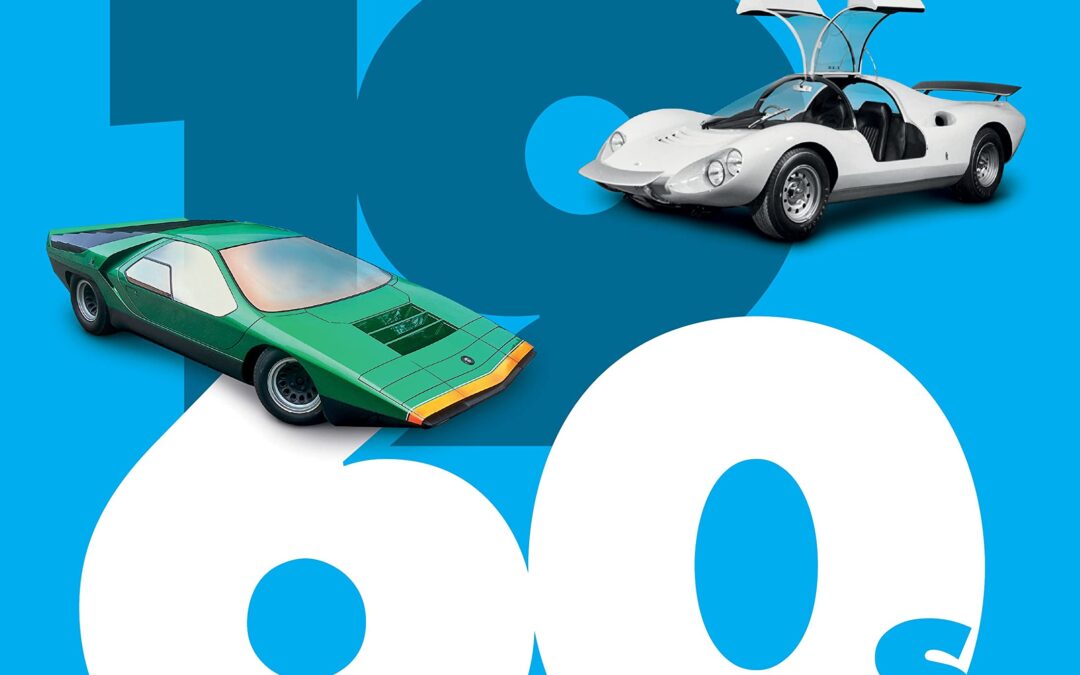
Concept Cars of the 1960s: Yesterday’s Future
COMING IN JANUARY
Concept cars are meant to break molds and explore new ideas; to forecast or establish trends. They afford designers the opportunity to let rip; to use their imaginations and envisage the sort of vehicle that we will be driving in years – perhaps decades – to come. The fact is that some concept cars are displayed at an event and never seen again, while others cross continents and become media darlings, only to be placed in storage – or worse – once they are no longer of use. The 1960s witnessed the emergence of countless memorable showstoppers, and this book presents a year-by-year rundown of the most memorable concept cars of the 1960s with several obscurities thrown in for good measure. Some have long since earned legendary status, foretelling the future, while others fell a long way short. Here is fascinating glimpse into how the future of motoring looked in the 1960s, from the sublime to the frankly ridiculous.
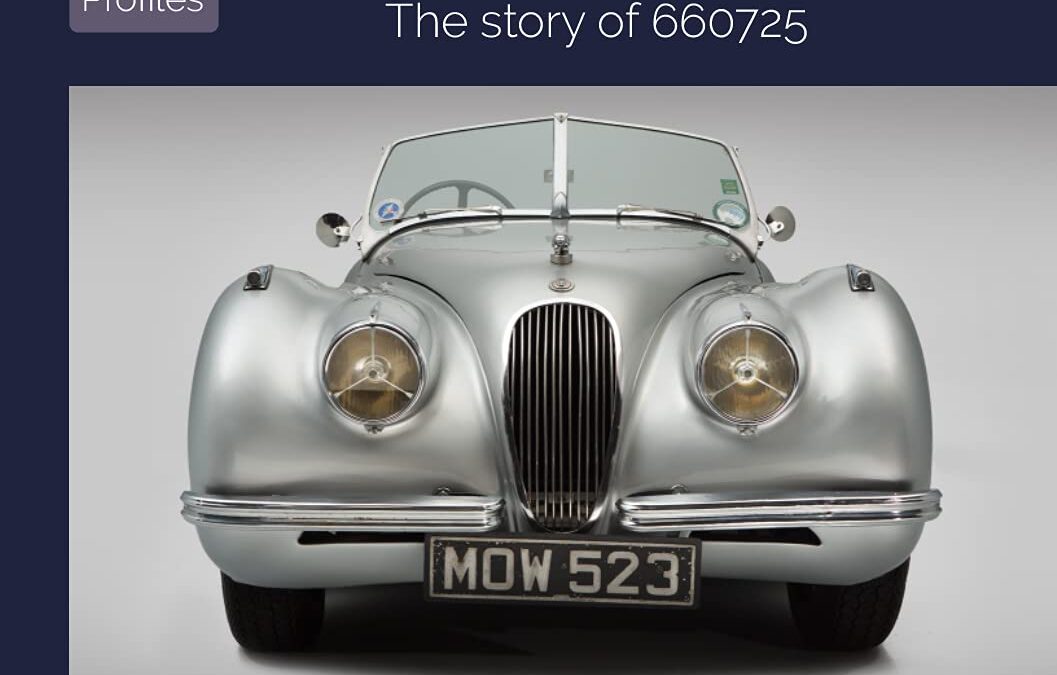
Jaguar XK120: The story of 660725 (Porter Profiles)
Few, if any, Jaguar XK120s can have enjoyed a more fascinating and varied life than chassis number 660725. Just under two-thirds of the total production was allocated to the Roadster, which had caused such a stir at the 1948 London Motor Show. Of that, 660725 was one of just 1,173 right-hand-drive Roadsters constructed.
Apart from now being the longest-serving XK120 owner, I also consider myself the most fortunate, lucky, accidental, blessed, providential – call it what you will – owner. Why? Because no fictional script writer could have come up with the number or variety of experiences, both dangerous and funny, in so many different countries and environments, that any combination of car and man would experience together.’ Bob Henderson, January 2013

Bruno Sacco: Leading Mercedes-Benz Design 1975-1999
When Bruno Sacco walked through the doors on his first day at Mercedes-Benz on 13 January 1958, it is highly unlikely that his Daimler-Benz colleagues could ever imagine that this nervous young man would not only revolutionize design but would change the way design and innovation connected with brand tradition forever.
Bruno Sacco is one of the most influential automotive designers of the late twentieth century; many models launched during his era now characterize the Mercedes-Benz brand. When Nik Greene asked Bruno Sacco to assist with this book, he replied humbly “No-one designs a car alone, and more to the point, I never, for one minute, wanted to. From the moment I became Head of Design, I put down my pens and became a manager of minds.”
With over 330 photographs and illustrations, this book includes an overview of the early days of functional vehicle design and the influence of safety on design evolution. The protagonists of Daimler-Benz design from Hermann Ahrens to Paul Bracq are covered. Design philosophy and innovation under Bruno Sacco is discussed along with the Sacco-designed cars and, finally, the Bruno Sacco legacy.
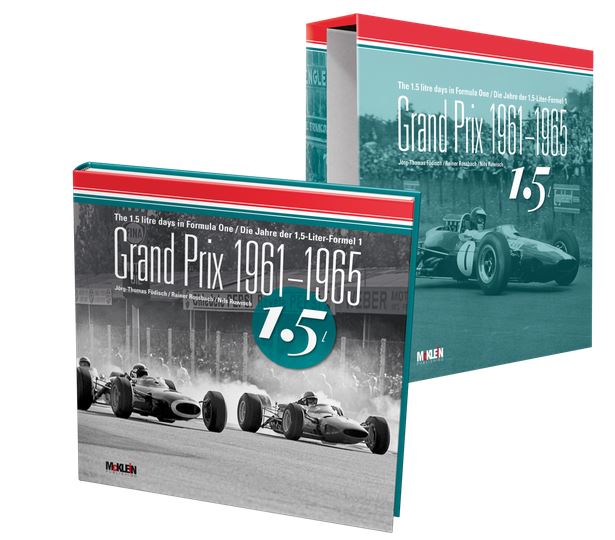
Grand Prix 1961-1965 – The 1.5 litre days in Formula One
IN STOCK!
Initially the British teams had opposed the new rules and thus entered the new Formula One at a technical disadvantage. Ferrari was better equipped with new 1.5 litre engines and thus the Scuderia won both the Driver and the Constructor Championships in 1961 and was able to repeat this success in 1964. Lotus was just as successful with the outstanding Jim Clark, and BRM driver Graham Hill also won the title. After the British had caught up with engines like the Climax V8, Lotus also pointed the way into the future with the Type 25, the first monocoque Formula One car.
The 1.5 litre formula saw the participation of some of the best Formula One drivers of all time with Stirling Moss, Graham Hill, John Surtees, Dan Gurney, Jim Clark and Jackie Stewart. And despite all the prophecies of doom that the “new” Formula One would not be exciting thanks to a lack of engine power, some thrilling sport was on offer during this five-year period. These Grands Prix were also a real spectacle for the spectators, because they were very close to the action.
Jörg-Thomas Födisch, Rainer Rossbach and Nils Ruwisch reveal in this book – using many previously unpublished photographs of which most are taken from the Bernard Cahier archive – the attraction and excitement generated by the forty-seven Grands Prix that constituted the World Championships for Drivers under the 1.5-litre Formula One regulations.29 x 29 cm, hardcover in a slipcase
Pages: 360
Pictures and illustrations: 220 in colour and 325 in black-and-white images

Landy Love Since 1948
- Fascinating Land Rover love stories from around the globe
- Includes magnificent new photos
- Portraits of passionate owners – faithful Landy owners discuss their adventures
- Celebrates the many uses of the Land Rover, from a wine-growing estate in South Africa, to the urban jungle in Germany, as well as Land Rovers used by the emergency services, as mobile cafes, and as a means to cross the Alps
On 29th January 2016 the last Land Rover Defender left the factory halls in Solihull (UK) – a Defender 90 Soft Top with heritage outfit – and went directly to the Jaguar Land Rover Collection exhibition. With this, a great story of success ended: the most original of all Land Rover models had been in mass production for 68 years. In 1948 it was developed for agricultural use, but the robustness of the all-wheel drive vehicle got round quickly. The demand never decreased and there were always new versions and engines. Today, 75 percent of all ‘Landies’ ever built are still in use worldwide.
This declaration of love for the British classic presents portraits of all Land Rover generations and of their most passionate owners.
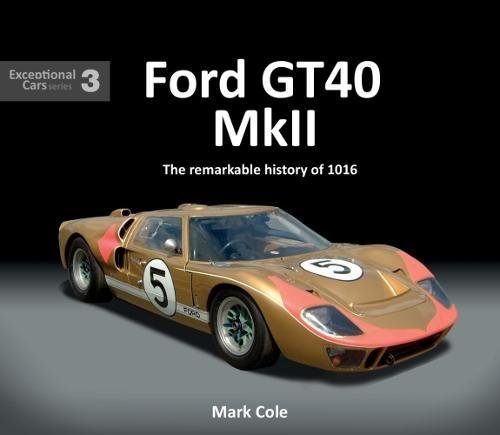
FORD GT40 Mk II: The remarkable history of 1016 (Exceptional Cars)
This book tells the story of Ford GT40 Mark II, chassis no. P/1016, one of the trio of cars that crossed the finishing line together at Le Mans in 1966 to score Ford’s first victory in the 24 Hour race. The Mark II was a development of the original Ford GT with a monstrous 7 litre V8 engine. 1016 made its racing debut at Daytona in January 1966 and was entered at Le Mans by Holman & Moody with a distinctive gold and pink color scheme. Driven by Ronnie Bucknum and Dick Hutcherson, it finished in third place behind the similar cars of Bruce McLaren and Chris Amon and Ken Miles and Denny Hulme.
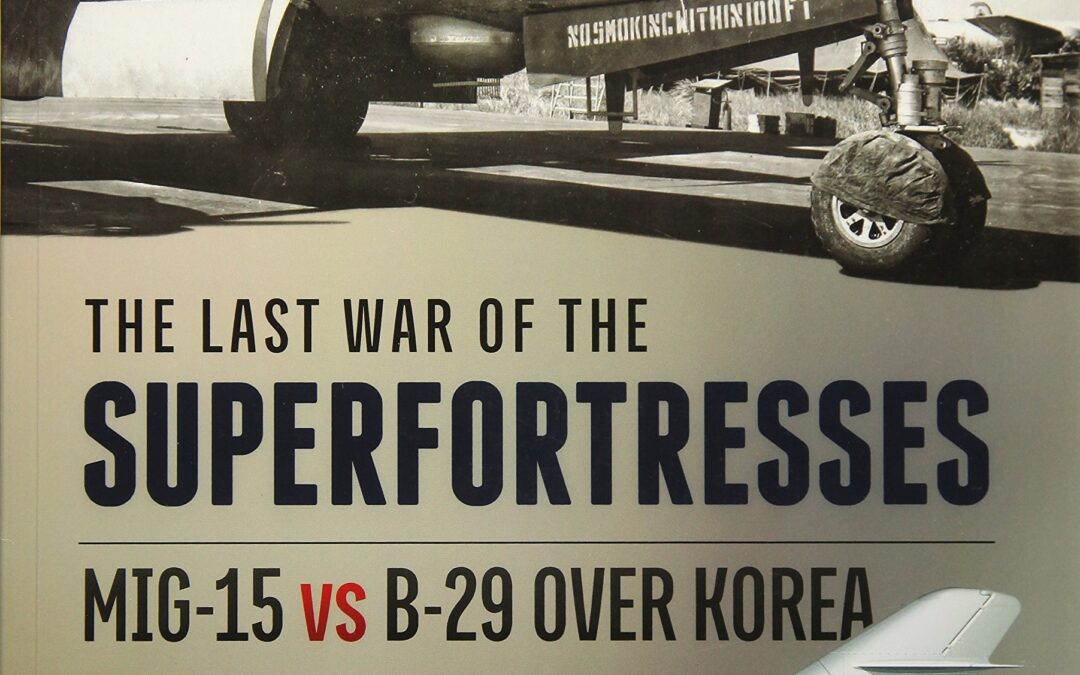
The Last War of the Superfortresses: MiG-15 vs B-29 over Korea
This work is an attempt by the authors to give as full and detailed a history as possible of the confrontation between Soviet fighters and the principal strike force of the United States Far East Air Force – the B-29 ‘Superfortress’ bombers during the course of the Korean War between 1950-1953. Military documents, which the authors have studied over many years of work in the Central Archive of the Ministry of Defense of the Russian Federation in Podolsk – as well as published Western sources – form the basis of this book.
The recollections of pilots who served in the 64th Fighter Air Corps, and who participated personally in the events described, are also widely used. Almost all the battles that took place between Soviet fighters and the ‘Superfortresses’ are analyzed in detail; the authors have, on the basis of a comparison of Soviet archive documents and data from published Western sources, attempted to clarify the actual losses on both sides in these battles. Particular attention has been paid to key events in the history of the confrontation between the MiG-15 and B-29 such as the air battles of April and October 1951, which had a significant impact on the course of the Korean War and influenced the development of military aviation in both the USSR and the USA. Following the encounters on the approaches to the bridges at Andung of 12 April 1951 Strategic Air Command decided against using ‘Superfortresses’ close to the area around the MiG bases. The outcome of a series of air battles from 22 to 27 October 1951 – the most famous of which was the battle between MiGs and B-29s in the area close to the airfield at Namsi on 23 October (‘Black Tuesday’) was a ban by Strategic Air Command on daylight operations by ‘Superfortresses’ in the Soviet fighter’s zone of operation. These battles also influenced the technical policy of the United States Air Force in relation to strategic bombers.
Extensive losses in combat with the MiGs served as one of the most influential arguments for curtailing the piston engine B-36 and B-50 bomber programs and boosting development of one of the most famous aircraft in the history of global aviation – the B-52 ‘Stratofortress’. Night operations, to which the B-29s and subsequently Soviet fighters were transferred, are also analyzed in detail in this book. These nocturnal operations culminated in the air battles of December 1952 and January 1953. After sustaining losses in these battles that were comparable to those of October 1951 the ‘Superfortresses’ would subsequently only carry out nocturnal sorties to the MiGs’ zone of operation in poor weather conditions. In this work, the authors have analyzed the advantages and the disadvantages of the La-11 and the MiG-15bis – the principal fighters of the 64th Fighter Air Corps – from the point of view of their ability to intercept the B-29s. Attention has been paid to the tactics of the opposing sides, and to how these changed over the course of the war. The technical aspects of the confrontation between Soviet fighters and ‘Superfortresses’ have been examined, and the reasons behind the different periods of success or failure in terms of performance in combat have been identified.
A great deal of statistical material has been provided in this book, which characterizes combat operations carried out by the B-29s and the fighters of the 64th Fighter Air Corps, both within the text itself and in the form of easy-to-use tables. The book is illustrated with photographs obtained both from the personal archives of veterans of the 64th Fighter Air Corps; from the Central Archive of the Ministry of Defense of the Russian Federation; and US National Archives. Color profiles showing camouflage & markings are also included.
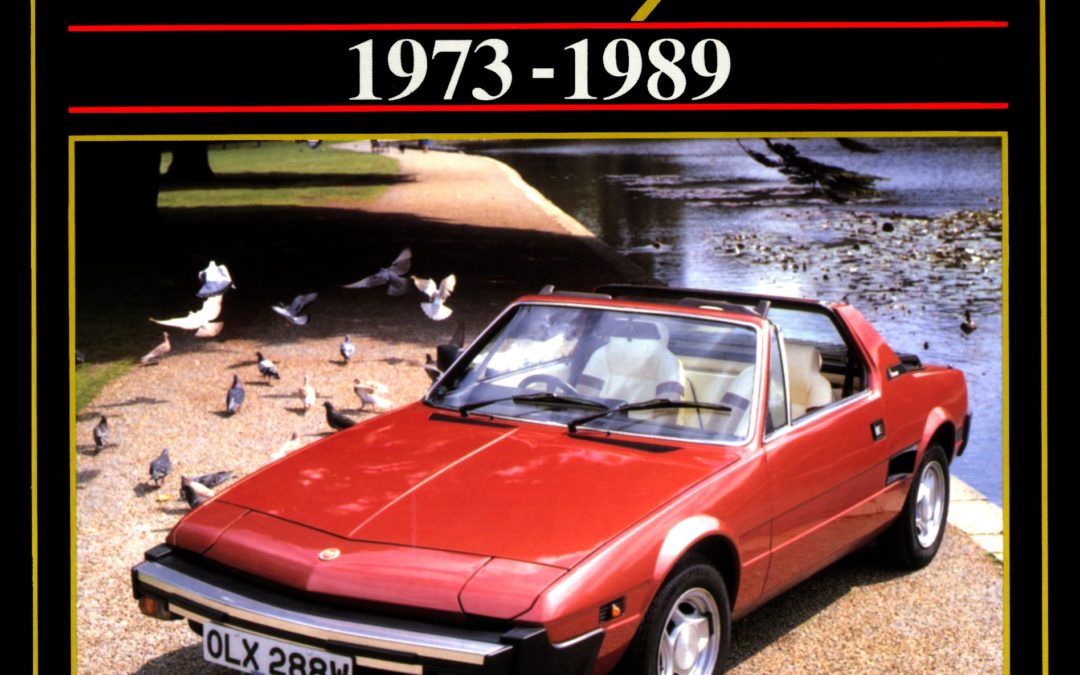
Fiat X1/9 Gold Portfolio 1973-1989
This car was the first Fiat designed specifically for the American market. The 1290cc engine from the 128 CoupT was fitted just ahead of the rear wheels. The removable top slotted into the front luggage compartment using a lot of the space but there was a small compartment in the rear. Although launched in 1972 it was not officially available in the UK until January 1977 and in October 1978 the Strada’s 1500cc engine and five-speed gearbox were fitted. Phased out in 1984 it was re-introduced in 1986 with electric windows and a special edition which marked the end of production in 1989. This is a book of road & comparison tests, spec. & technical data, driver’s impressions, buying secondhand and model changes. Models covered include, 1300, 1500, VS and Bertone.
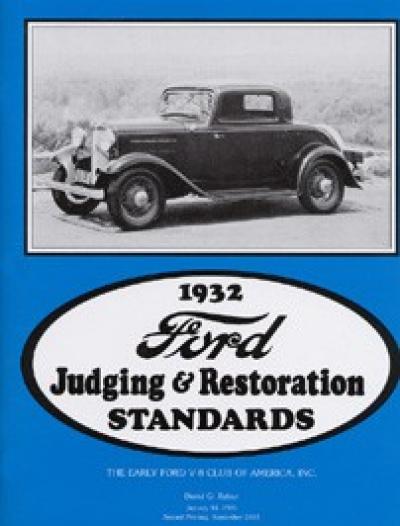
1932 Ford Book
This is the Second Printing of the 1932 Ford Book, Judging & Restoration Standards (September 2005). This book duplicates the January 1981 printing, and is a great guideline for the 1932 Ford Car.
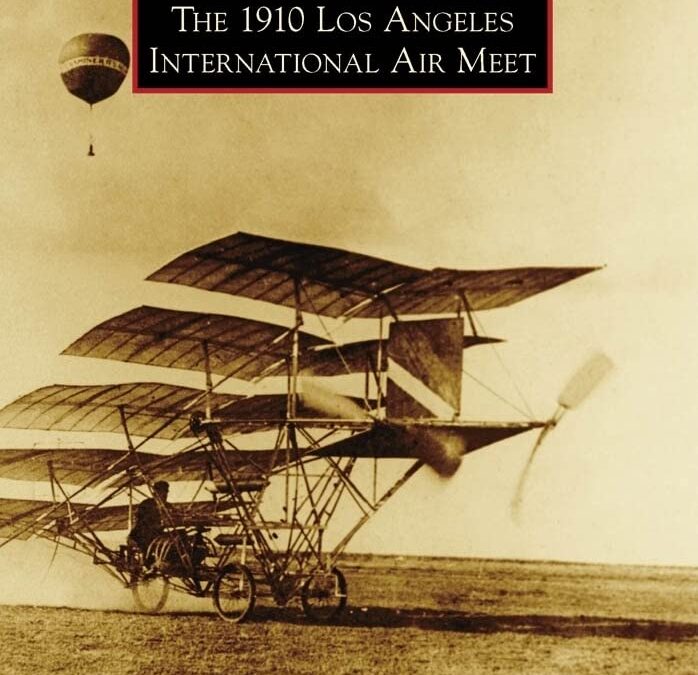
1910 Los Angeles International Air Meet
America’s first international air meet was held January 10-20, 1910, in Los Angeles on a mesa called Dominguez Hill, situated 13.5 miles south of the plaza at the pueblo of Los Angeles. Enthusiasm for aviation grew after the first international air meet in 1909 in Rheims, France, where American aviator Glenn H. Curtiss won three prestigious speed prizes and 36,000 francs. An even more spectacular air meet, which would also invigorate the local economy, was promoted for Los Angeles. Businessman Dick Ferris, the Los Angeles Merchants and Manufacturers Association, and the Los Angeles Examiner collaborated to make it possible. Most Americans had never seen the newfangled machines that soared in the skies. Initially skeptical, they soon were awed. So began America’s love affair with aviation. The air meet influenced aviation in Southern California and transportation worldwide into the 21st century.
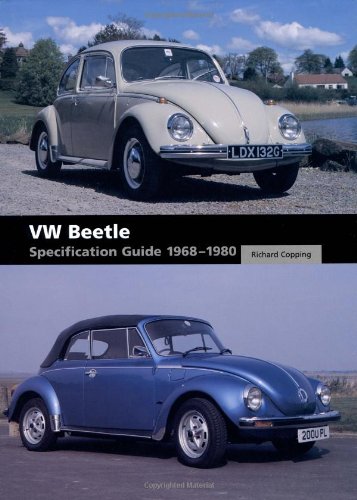
VW Beetle Specification Guide 1968-1980
By the late 1960s the Beetle had enjoyed over twenty years of continuous production, dominated its home market and conquered export markets all around the world. Volkswagen’s policy of constant improvement and refinement to a single model appeared to be vindicated. However, 1968 saw the death of Heinz Nordoff, who was the driving force behind the Beetle’s evolution and continued success. In many ways, this was a watershed year; the 1968 model introduced many significant changes to the car, and it became inevitable that a replacement for the venerable Beetle would have to be developed. This book charts the closing years of the Beetle’s production life in Germany; from the revamped 1968 model to the 1302, 1303, the Cabriolet, and the various Specials produced later.
Topics covered include:
– Brief history , 1935-1967
– Full history, 1968-1980
– Comprehensive production survey
– Specification and detail changes by model year [August 1967 to January 1980]
– Engine options
– Factory fitted optional equipment
– Paint and trim colors
– Special and export editions
– The Karmann Cabriolet
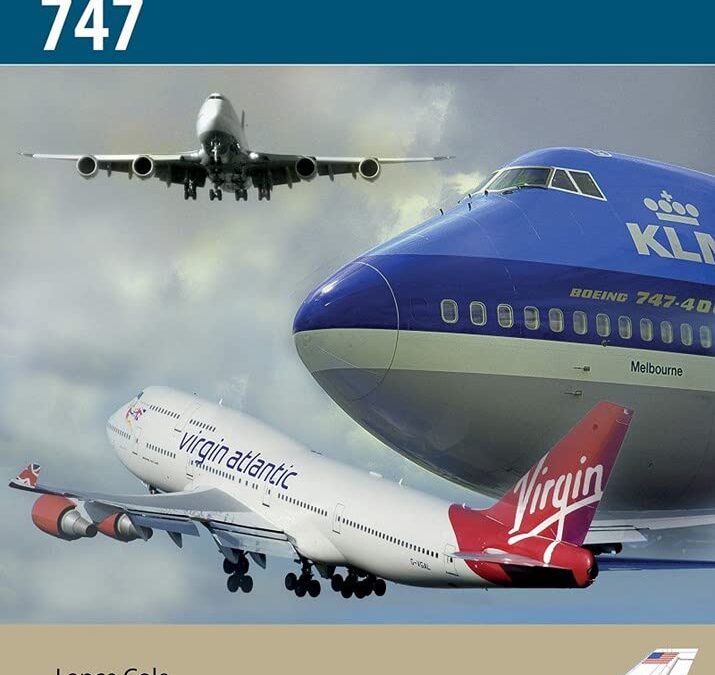
Boeing 747: The Original Jumbo Jet (FlightCraft)
Boeing’s 747 ‘heavy’ has achieved a fifty-year reign of the airways, but now airlines are retiring their fleets as a different type of long-haul airliner emerges. Yet the ultimate development of the 747, the -800 model, will ply the airways for many years to come.
Even as twin-engine airliners increasingly dominate long-haul operations and the story of the four-engine Airbus A380 slows, the world is still a different place thanks to the great gamble that Boeing took with its 747. From early, difficult days designing and proving the world’s biggest-ever airliner, the 747 has grown into a 400-ton leviathan capable of encircling the world. Boeing took a massive billion-dollar gamble and won.
Taking its maiden flight in February 1969, designing and building the 747 was a huge challenge and involved new fields of aerospace technology. Multiple fail-safe systems were designed, and problems developing the engines put the whole programme at risk. Yet the issues were solved and the 747 flew like a dream said pilots – belying its size and sheer scale.
With its distinctive hump and an extended upper-deck allied to airframe, avionics and engine developments, 747 became both a blue-riband airliner and, a mass-economy class travel device. Fitted with ultra-efficient Rolls-Royce engines, 747s became long-haul champions all over the world, notably on Pacific routes. across the Atlantic in January 1970, 747 became the must-have, four-engine, long haul airframe. Japan Airlines, for example, operated over sixty 747s in the world’s biggest 747 fleet.
By the renowned aviation author Lance Cole, this book provides a detailed yet engaging commentary on the design engineering and operating life and times of civil aviation’s greatest sub-sonic achievement.
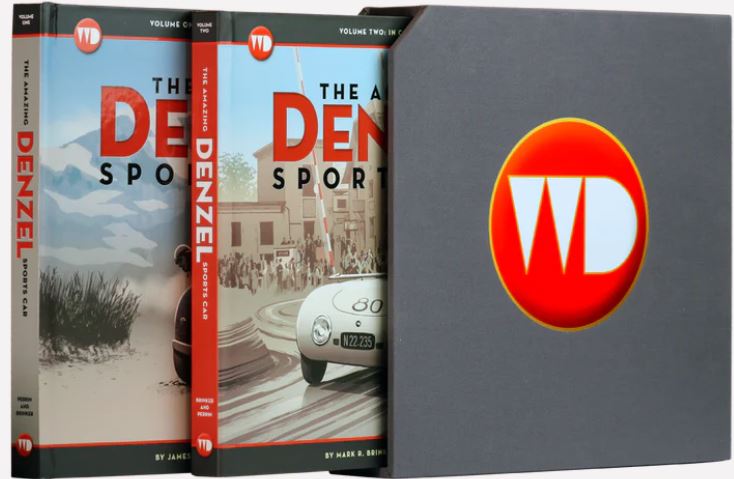
The Amazing Denzel
Wolfgang Denzel was an engineer and an Austrian industrialist. He was an inventor, innovator, and a business maverick. He was also a highly competitive sportsman winning numerous motorcycle events before and after WWII. In addition, Denzel was a winning Alpine sports car racer and yachtsman.
In 1948 Denzel began building sports cars in his workshop in Vienna. Denzel was absolutely fanatical about the construction of the car that bore his name. Quality, functionality, and beauty dominated every aspect of the build. The resulting sports car was therefore an intriguing automotive object. On the one hand the cars were beautifully proportioned, elegant little jewel boxes with handsomely trimmed interiors; on the other they were lightweight, nimble racing weapons which recorded more than 65 podium finishes at the most competitive European events of the 1940s and 50s.
One of the true milestones of the marque was Wolfgang Denzel’s victory at the rugged multi-stage 1949 Österreichische Alpenfahrt (Austrian Alpine Rally) which was the highlight of the Austrian racing season. This victory was especially significant as Denzel won the Alpine Cup while trouncing rival Porsche. By 1954 a Denzel was competing in North America at Sebring. Racing legend Dan Gurney later piloted a Denzel 1500 to an impressive class win at Pomona in January 1957, convincing North American spectators that these machines were not only Alpine rally winners but also serious road racing competitors.
Our aim with this work was to write the definitive English language treatise on the history of the Denzel sports car. A secondary goal was to clarify common misconceptions about these wonderful machines.
In this book we, as Denzel owners and enthusiasts, celebrate the superbly hand-crafted machines of Wolfgang Denzel. His cars were, and remain, truly special with the majority having been built with Denzel chassis, engines, and aluminum bodies. These automobiles are quite beautiful and are highly intriguing from an aesthetic, engineering, and historical standpoint.
DENZEL MOTORSPORTS HERITAGE
The Denzel sports car has a significant motorsports history in both Europe and the U.S.A. The Amazing Denzel Sports Car richly chronicles important moments in Denzel racing heritage as an entire volume is dedicated to Denzel sports cars in competition, with a huge number of professional period racing photographs.
CHARTS & DEEP DETAILS
Collectors and enthusiasts devour details. The Amazing Denzel Sports Car was developed with this in mind. Inside you’ll find original documents, technical drawings, charts, and so much more. All guaranteed to delight automotive enthusiasts upon discovery.
ONLY THE BEST PHOTOGRAPHY
We believe the Denzel sports car is a work of art. It was, therefore, vital to the authors that The Amazing Denzel Sports Car be printed by a fine art print house. Inside, you’ll find over 400 photographs shot by some of the finest automotive photographers in the world.
2 Volumes in slipcase
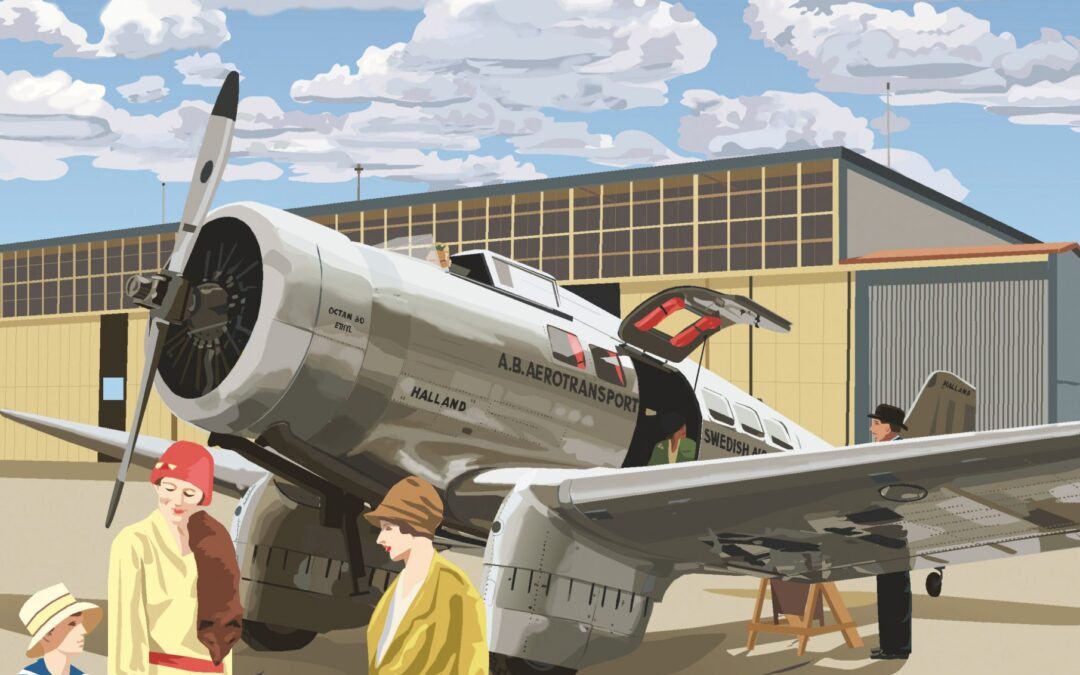
Northrop Delta – AB Aerotransport
At the beginning of the 1930’s, night air mail services started to become more and more important for European Airlines. Navigation and safety equipment improved drastically and aircraft became much more economical to fly. The introduction of the fast Lockheed Orion by Swissair in April 1932 led to a true revolution within air transport. “Everyone wanted aircraft that flew faster than their existing obsolete Fokker- or Junkers aircraft.
In Sweden, AB Aerotransport’s Managing Director, Carl Florman, became interested in faster airliners as well. In May 1933, Bernt Balchen introduced them to the Northrop Gamma and was interested in a similar Aircraft for his airline. Offers were requested through Northrop representative, Norwegian aviator Bernt Balchen, AB Aerotransport ordered in October 1933, a passenger Delta 1C and in January 1934, a mail aircraft, the Delta 1E.
The operation of both aircraft was marked by problems and challenges for the pilots. It took them some time to master the aircraft. The Delta 1E never entered service, as it crashed on a trial mail flight. In 1937, ABA sold the Delta 1C to Spanish airline Lineas Aereas Postales Espaňolas – LAPE. It remained in civil and military service until well after World War II.
After intensive research, the author (Rob J. M. Mulder) describes in detail the history and operation of these two aircraft. But Bernt Balchen’s role in the story and the visit of a Northrop Gamma to Norway is described. Also, we learn about the history and development Northrop Alpha, Beta and Gamma, as well as the other Deltas. In addition, the military types and their use in Norway and Sweden and other countries is described. The book is illustrated with many photographs, tables, colour profiles by Juanita Franzi, Nils Mathisrud and Torstein Landström Wallmo. Mats Averkvist supplied drawings and was a great support for the author.

Formula One- the Real Score?
This book fills the gaps in Formula 1 records. The 70 years of F1 can be neatly divided into two eras at January 1980. At that point the terms “Grand Prix” and “World Championship’ became synonymous.
Until then, over half of F1 races were not included in the Championship for the spurious reason that each country should have just a single race. This does a disservice to the achievements of drivers of the Fangio, Moss, Clark and Stewart era and even more-so to the four pre-championship years which began in 1946.
When a commentator says “Rosberg’s 16th win equals the F1 wins of Stirling Moss” this is manifestly untrue. If the same drivers, in the same cars, compete at the same tracks, and over a similar distance, then each race deserves to have its place in the records as a “Championship quality” event.
This book includes such races alongside contemporary Championship races and, combined with known figures since 1980, produces what can surely be accepted as “The Real Score” of Formula 1.
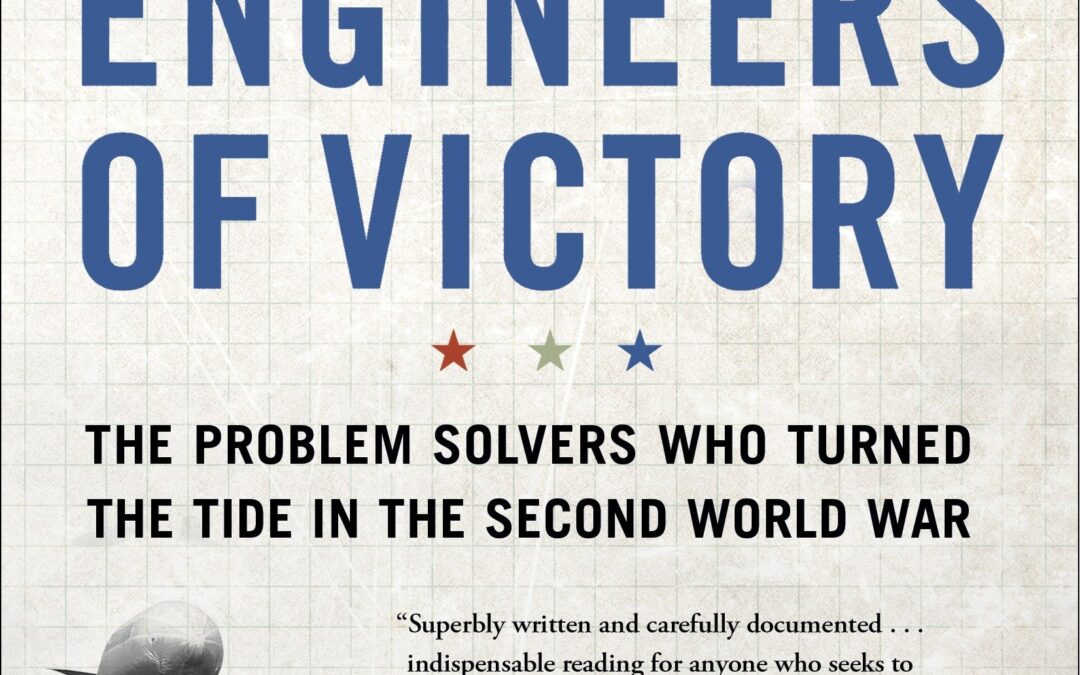
Engineers of Victory: The Problem Solvers Who Turned The Tide in the Second World War
Paul Kennedy, award-winning author of The Rise and Fall of the Great Powers and one of today’s most renowned historians, now provides a new and unique look at how World War II was won. Engineers of Victory is a fascinating nuts-and-bolts account of the strategic factors that led to Allied victory. Kennedy reveals how the leaders’ grand strategy was carried out by the ordinary soldiers, scientists, engineers, and businessmen responsible for realizing their commanders’ visions of success.
In January 1943, FDR and Churchill convened in Casablanca and established the Allied objectives for the war: to defeat the Nazi blitzkrieg; to control the Atlantic sea lanes and the air over western and central Europe; to take the fight to the European mainland; and to end Japan’s imperialism. Astonishingly, a little over a year later, these ambitious goals had nearly all been accomplished. With riveting, tactical detail, Engineers of Victory reveals how.
Kennedy recounts the inside stories of the invention of the cavity magnetron, a miniature radar “as small as a soup plate,” and the Hedgehog, a multi-headed grenade launcher that allowed the Allies to overcome the threat to their convoys crossing the Atlantic; the critical decision by engineers to install a super-charged Rolls-Royce engine in the P-51 Mustang, creating a fighter plane more powerful than the Luftwaffe’s; and the innovative use of pontoon bridges (made from rafts strung together) to help Russian troops cross rivers and elude the Nazi blitzkrieg. He takes readers behind the scenes, unveiling exactly how thousands of individual Allied planes and fighting ships were choreographed to collectively pull off the invasion of Normandy, and illuminating how crew chiefs perfected the high-flying and inaccessible B-29 Superfortress that would drop the atomic bombs on Japan.
The story of World War II is often told as a grand narrative, as if it were fought by supermen or decided by fate. Here Kennedy uncovers the real heroes of the war, highlighting for the first time the creative strategies, tactics, and organizational decisions that made the lofty Allied objectives into a successful reality. In an even more significant way, Engineers of Victory has another claim to our attention, for it restores “the middle level of war” to its rightful place in history.
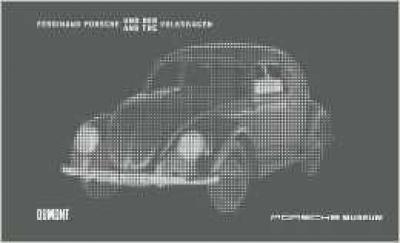
Ferdinand Porsche and the VW
The development of the Volkswagen Beetle was a central achievement in the early history of the Porsche Company. In January 1934, Ferdinand Porsche wrote an “expose regarding the construction of a German people’s car” that would have a lasting effect on automotive history. The inexpensive compact automobile would become a symbol and icon of mass motorization. An enduring popular favorite, it was also a leader in terms of production duration and quantity, and was discontinued in July 2003 when the last Volkswagen left the assembly line in Mexico. With 21.5 million cars manufactured, the VW Beetle is easily one of the most commonly built automobiles in the world. This book incorporates a comprehensive account of the history of the Beetle’s development, including largely unpublished pictorial and documentary material from the holdings of the Porsche archive, while an up-to-date final chapter discusses the subsequent cooperation between Porsche and Volkswagen.


